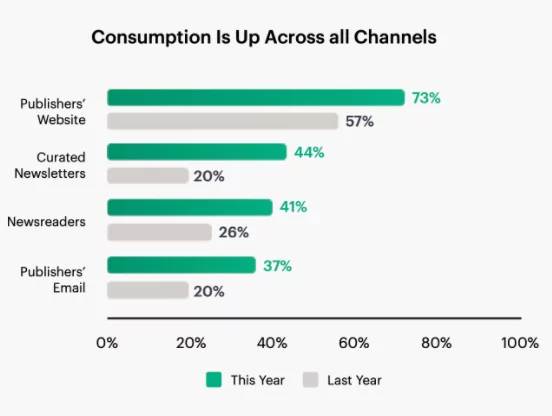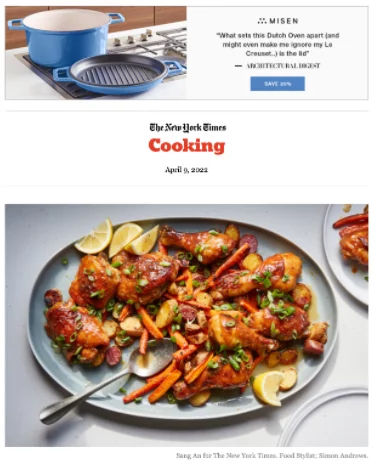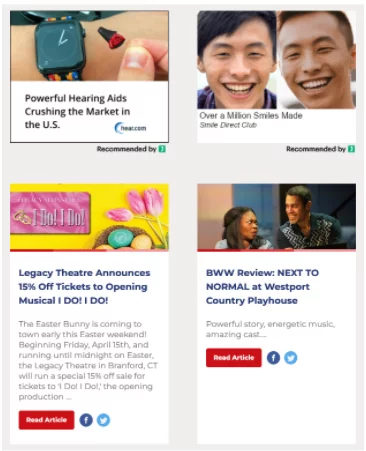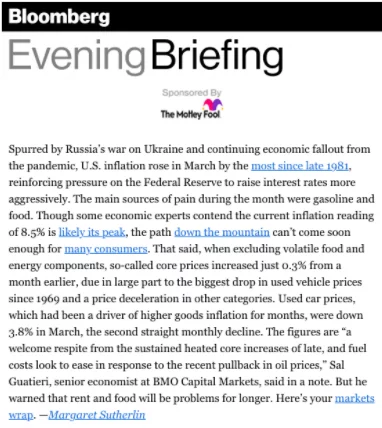Email should be an essential part of each brand’s advertising mix in 2022.
That’s right. Search and social media have had their days. But now — with privacy concerns mounting and first-party data becoming a priority — it’s email’s time to shine.
According to Jeeng’s 2022 Digital Advertising Consumer Survey Report, there’s been a fundamental shift in consumer behavior over the past couple years, and email lies at the center of that shift.

Publishers have seen a nearly 2X increase in email readership and 75% of U.S. consumers check their email several times a day. On top of that, 35% now report paying for a subscription to a digital publication or email newsletter — up from 20% in 2020.

Advertisers have an opportunity to tap into this growing audience and launch targeted, personalized email ads across newsletters. As our study found, almost 70% of consumers will click on an email ad if it’s interesting or relevant to them.

Just to clarify, email advertising is the process of distributing paid ad placements in emails, like display ads or native ads. That’s not to be confused with email marketing, which is the process of sending organic emails, like subscription newsletters or real-time email alerts.
5 Types of Email Advertising
More specifically, let’s unpack the five main types of email ads that brands can use to reach their customers and drive leads.
1. Display email ads
Display ads are banner ads that are placed strategically within emails to grab readers’ attention. These ads often appear above the fold, in the middle of an email, or at the bottom to greet the user once they’re done consuming the publisher’s organic content.
This email from The New York Times Cooking, for example, includes an above-the-fold ad for a Dutch Oven.

2. Text email ads
Text email ads are inserted into the copy of an email as hyperlinks. Also known as affiliate ads, these paid placements commonly link out to landing pages where customers can buy a promoted product, start a trial for a service, or redeem a special offer.
3. Native email ads
Native email ads match the format of their surrounding content, fitting seamlessly into the user experience. For instance, in an email newsletter with an article roundup, one of those articles might be sponsored by a brand. It will look just like the other articles in the email but it will have a disclaimer that might say “Sponsored by” or “Paid for by.”
Just look at this weekly email from BroadwayWorld. It includes a selection of articles from the publisher’s website along with native ads that are recommended by Jeeng:

4. Sponsored emails
Sponsored emails are publisher emails that are simply sponsored by or paid for by a brand partner. So the content of these emails will likely contain organic publisher articles and blogs, but they will include “Sponsored by” disclaimers at the top, as with this email from Bloomberg:

5. Dedicated emails
Dedicated emails are exclusive promotional emails that are paid for and include content that’s entirely created by the advertiser. It’s like taking out a full-page ad in a newspaper — but in email form.
Jeeng’s Dedicated Email offering, for example, provides custom matchmaking to pair publishers with advertisers and maximize ROI and value for both. And advertisers don’t just get the exposure; they also enjoy 100% share-of-voice with a full takeover of the email newsletter content.
Get started with your own email ads
Jeeng uses an AI-based algorithm to help advertisers reach built-in audiences across our network of trusted publisher partners. Whether you want to launch native ads, display ads, or dedicated email ads — we can help.
Ready to get started? Contact us to learn more.


